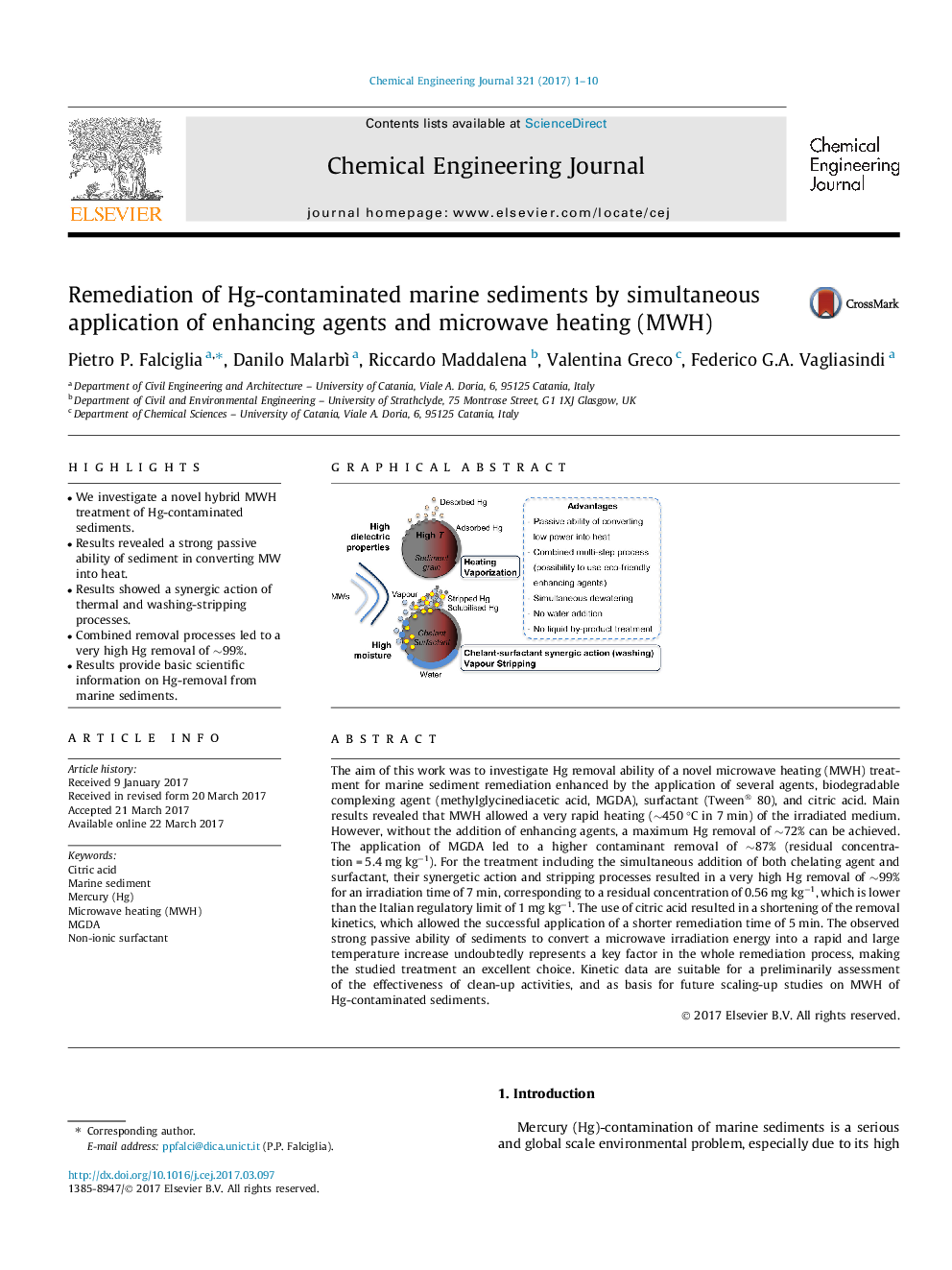| کد مقاله | کد نشریه | سال انتشار | مقاله انگلیسی | نسخه تمام متن |
|---|---|---|---|---|
| 6465779 | 1422957 | 2017 | 10 صفحه PDF | دانلود رایگان |

- We investigate a novel hybrid MWH treatment of Hg-contaminated sediments.
- Results revealed a strong passive ability of sediment in converting MW into heat.
- Results showed a synergic action of thermal and washing-stripping processes.
- Combined removal processes led to a very high Hg removal of â¼99%.
- Results provide basic scientific information on Hg-removal from marine sediments.
The aim of this work was to investigate Hg removal ability of a novel microwave heating (MWH) treatment for marine sediment remediation enhanced by the application of several agents, biodegradable complexing agent (methylglycinediacetic acid, MGDA), surfactant (Tween® 80), and citric acid. Main results revealed that MWH allowed a very rapid heating (â¼450 °C in 7 min) of the irradiated medium. However, without the addition of enhancing agents, a maximum Hg removal of â¼72% can be achieved. The application of MGDA led to a higher contaminant removal of â¼87% (residual concentration = 5.4 mg kgâ1). For the treatment including the simultaneous addition of both chelating agent and surfactant, their synergetic action and stripping processes resulted in a very high Hg removal of â¼99% for an irradiation time of 7 min, corresponding to a residual concentration of 0.56 mg kgâ1, which is lower than the Italian regulatory limit of 1 mg kgâ1. The use of citric acid resulted in a shortening of the removal kinetics, which allowed the successful application of a shorter remediation time of 5 min. The observed strong passive ability of sediments to convert a microwave irradiation energy into a rapid and large temperature increase undoubtedly represents a key factor in the whole remediation process, making the studied treatment an excellent choice. Kinetic data are suitable for a preliminarily assessment of the effectiveness of clean-up activities, and as basis for future scaling-up studies on MWH of Hg-contaminated sediments.
219
Journal: Chemical Engineering Journal - Volume 321, 1 August 2017, Pages 1-10